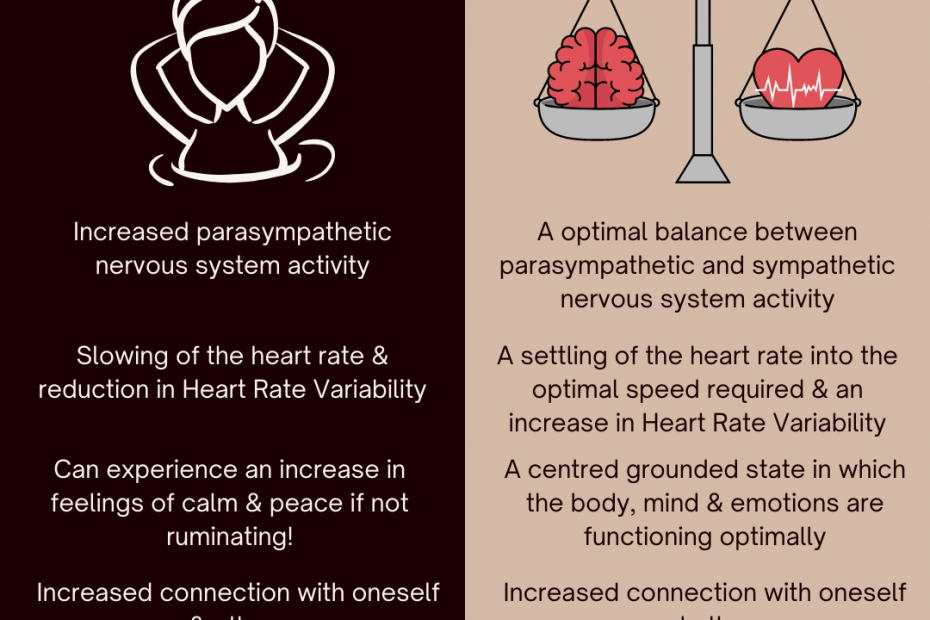And why we need both for optimal function
Introduction
In some of our events and mentoring, we offering training in the techniques from The HeartMath Institute, an incredible research and training organisation that has been diving into the practical affect that the physical heart has in modulating stress, cultivating resilience and accessing our innate wisdom, or heart intelligence.
One of the core breakthroughs in their research is in discovering how to assist individuals and groups to access an optimal internal state known as psycho-physiological coherence.
HeartMath Institute Research Director Dr. Rollin McCraty describes ‘Coherence’ as the “state where the heart, mind and emotions are in energetic alignment and cooperation,” This state is marked by a distinct change in the way the heart is beating, not the heart rate, but the heart rhythm pattern that emerges when we track the heart beats over time.
Coherence is characterized by increased order and harmony in both our psychological (mental and emotional) and physiological (bodily) processes. Research shows when we activate this state, our physiological systems function more efficiently, we experience greater emotional stability, and we also have increased mental clarity and improved cognitive function. Simply stated, our body and brain work better, we feel better, and we perform better.
Physiologically, the coherence state is marked by the development of a smooth, sine-wavelike pattern in the heart-rate variability (HRV) trace, the measure we use to assess the heart rhythm pattern
What is the difference between relaxation and coherence?
Coherence is not relaxation. The state of coherence is both psychologically and physiologically distinct from the state achieved through most techniques for relaxation.
At the physiological level, relaxation is characterised by an overall reduction in autonomic outflow (resulting in lower HRV) and a shift in Autonomic Nervous System balance towards increased parasympathetic activity.
Coherence does generally result in an increase in parasympathetic activity (because most of us are so wound up!), but it is physiologically distinct from relaxation in that the system oscillates at its natural resonant frequency and there is increased harmony and synchronisation in nervous system and heart-brain dynamics.
Unlike relaxation, the coherence state does not necessarily involve a lowering of heart rate, but rather is primarily marked by a change in the heart rhythm pattern – A harmonious balance between the activity of the two branches of the Autonomic nervous system (parasympathetic and sympathetic).
We encourage incorporating both coherence and relaxation throughout the day and feel they are both essential elements for successfully navigating our lives and optimising our wellbeing – physically, mentally, emotionally and spiritually.
Relaxation involves doing things we enjoy that help us to slow down – such as walking on the beach, having a bath, catching up with good friends.
Coherence involves bringing in the specific heart-focused emotional element more deliberately. Gratitude and appreciation are the most researched emotions, but other feelings such as compassion, joy and ease also change the heart rhythms.
